In 2015, animal agriculture is usually about going big. The image that most often comes to mind when considering livestock farming is the resource-intensive cow housed in a feedlot.
In our society, bigger animals and larger herds are better. The culmination of this logic is exemplified by Concentrated Animal Feeding Operations (CAFOs), which put as many animals into as little space as possible. CAFOs produce most of the meat consumed in North America.
What is the best way to maximize space efficiency and quality of meat in raising animals? Go small. With smaller animals and herd size you can raise better quality meat with less inputs, while maximizing your possibility for product diversity.
What are we talking about when we say Micro Meats? Animals that are easy for one person to handle, have easily moveable housing, and a better-feed conversion ratio. A few examples include ducks, chickens, rabbits, guinea pigs and quail. You can add to this by going even smaller: raising solider fly larvae, crickets or worms as food sources for your other animals. (There is a growing contingent of people who feel that bugs are the protein of the future, I however am not interested in going that small just yet.)
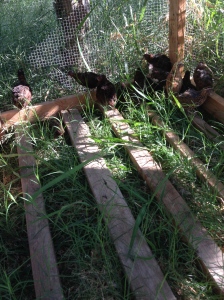
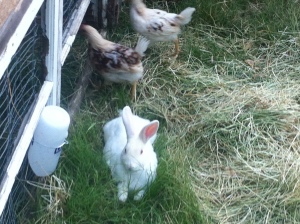
Lets take a look at advantages of micro meats in the realms of housing, feed and slaughter.
As far as creating a habitat for your livestock, TSB subscribes to the belief that animals should be kept in conditions as similar as possible to their natural environment. Our Micro Meats forage foods from their surroundings and would never be found on bare dirt. This means we constantly put our animals onto fresh ground and embrace the fact that movement is central to our animal operation.
It is much more manageable to rotate smaller animals onto fresh pasture. Take it from me that wrangling a disagreeable rabbit is much easier than corralling a cranky cow. Because Micro Meats are less challenging to physically manage, TSB is able to raise multiple varieties (rabbits, quail, guinea pigs, chickens, ducks, worms, crickets).
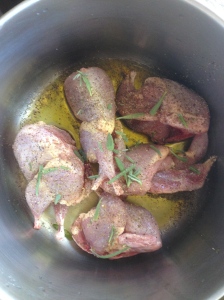
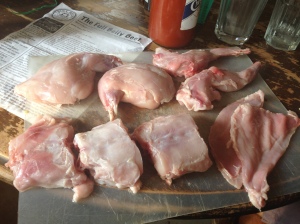
Small animals also generally have a better feed-conversion ratio (ability to turn food into meat) so the total quantity of food needed to produce a pound of meat is much less. In addition, smaller animals have more diverse diets, so unlike ruminates you can utilize food sources from waste streams. Food scraps and byproducts such as whey make up a significant portion of the feed for our chickens, rabbits and quail.
Lastly, slaughter is a huge cost in a livestock operation. You not only have to transport your animal to a slaughter facility, but also pay a high price for the services. Micro Meats can much more easily be slaughtered on site. Processing a 3 lb quail is a much simpler on-farm task then processing a 250 lb hog. Moreover, the animal does not undergo the stress of traveling to a strange environment, which can negatively impact the taste of the meat.
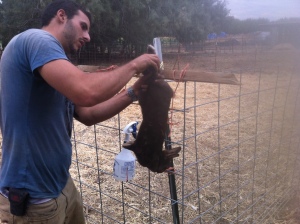
The bottom line is this: an animal that is managed well will taste better. In a successful Micro Meat system we have multiple high quality meat products that can be raised on a small amount of land with low feed and slaughter costs. The philosophical underpinning of Micro Meats is not only about scaling down production size, but also consciously scaling down our appetites for meat and ultimately sending meat production away from the factory.
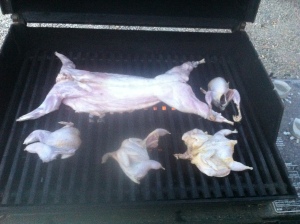
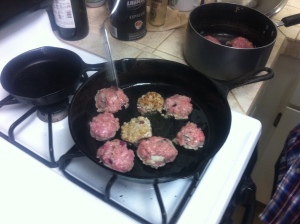

One thought on “Micro Meats”